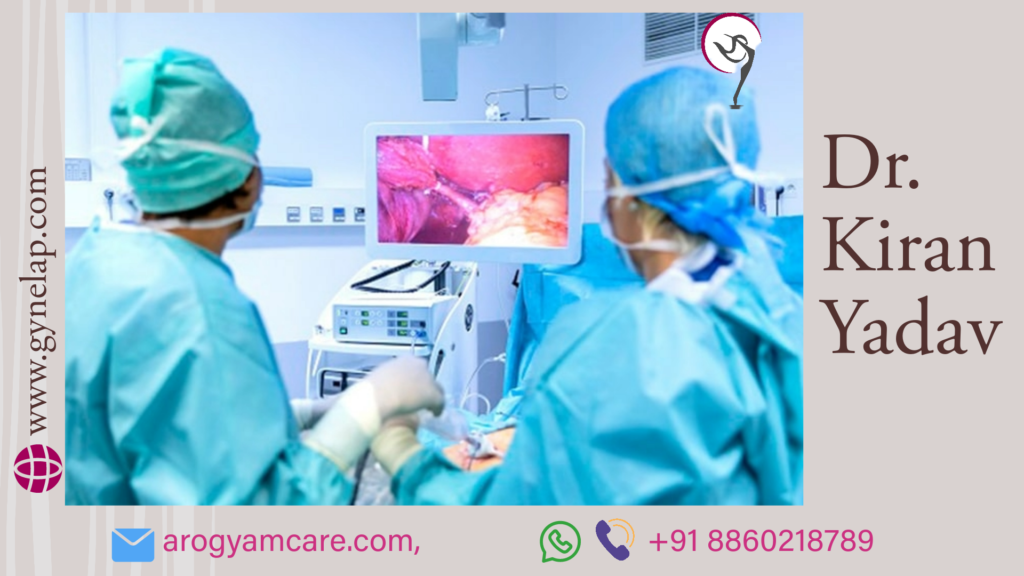A laparoscopic hysterectomy is a type of surgery that removes the uterus through very small keyhole incisions in the abdomen, unlike an abdominal hysterectomy, which requires a large cut.
How Laparoscopic Hysterectomy is done?
Gynae laparoscopic surgeon uses a laparoscope, a thin tube with a light and a camera at the end, to guide the removal of the uterus. The laparoscope is inserted through a small incision near the belly button, and other surgical instruments are inserted through two or three other small incisions in the lower abdomen. The surgeon can see the inside of the abdomen on a monitor and perform the surgery with precision and accuracy.
Gynaecological Conditions treated by Laparoscopic Hysterectomy
- Uterine fibroids: Noncancerous growths that cause heavy bleeding, pain, or pressure in the pelvis. Click to read about uterine fibroid.
- Endometriosis: A condition where the tissue that lines the uterus grows outside of it, causing pain, bleeding, or infertility.
- Adenomyosis: A condition where the tissue that lines the uterus grows into its muscular wall, causing heavy bleeding or pain.
- Uterine prolapse: A condition where the uterus slips down into the vagina due to weakened pelvic muscles or ligaments.
- Abnormal uterine bleeding: A condition where the bleeding from the uterus is too heavy, too frequent, or irregular.
- Chronic pelvic pain: A condition where there is persistent or recurrent pain in the lower abdomen or pelvis that interferes with daily activities or quality of life.
- Gynecologic cancer: A cancer that affects the uterus, cervix, ovaries, or fallopian tubes. A laparoscopic hysterectomy may also be done as a preventive measure for women who have a high risk of developing gynecologic cancer due to genetic factors or family history. Click to read about uterus cancer and cervical cancer.
Advantages/ benifits of Laparoscopic Hysterectomy
Laparoscopic hysterectomy has fewer side effects compared to open hysterectomy. Benefits of laparoscopic hysterectomy by best laparoscopic gynaecology surgeon includes:
- Smaller incisions and scars
- Less blood loss and risk of infection
- Less pain and need for pain medication
- Shorter hospital stay and recovery time
- Faster return to normal activities
Precautions/ advice after laparosopic hysterectomy
Precautions and best advice after hysterectomy by laparoscopy as suggested by senior gynecologists includes:
- Avoid strenuous activities.
- Drink plenty of fluids and eat a balanced diet.
- Take your medication as prescribed
- Keep your incisions clean and dry and watch for signs of infection such as redness, swelling, pus, or fever
- Avoid lifting anything heavier or doing any twisting or bending motions
- Avoid sexual intercourse for six weeks or until your doctor says it is safe
- Seek medical attention if you have severe pain, heavy bleeding, foul-smelling discharge, difficulty urinating, shortness of breath, chest pain, or leg swelling



